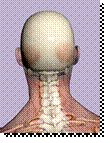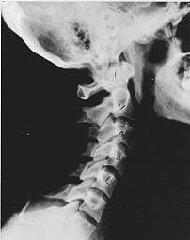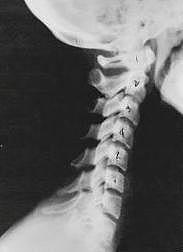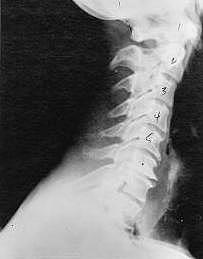 While an automobile is built to take a slow 8 to 10 mph low impact crash that is not necessarily true for your body. The most common injury suffered in a low impact rear-end car accident collision is a whiplash injury. It is a soft tissue injury caused by rapid acceleration or deceleration resulting in a snapping of the neck back and forth and this in turn causes the spine to travel beyond its normal limits. The muscles and ligaments supporting the spine may then become torn, and the spinal discs may bulge, tear or rupture. The nerve roots in the neck can get stretched and irritated.
While an automobile is built to take a slow 8 to 10 mph low impact crash that is not necessarily true for your body. The most common injury suffered in a low impact rear-end car accident collision is a whiplash injury. It is a soft tissue injury caused by rapid acceleration or deceleration resulting in a snapping of the neck back and forth and this in turn causes the spine to travel beyond its normal limits. The muscles and ligaments supporting the spine may then become torn, and the spinal discs may bulge, tear or rupture. The nerve roots in the neck can get stretched and irritated.
General Motors (GM) did a study regarding crashes at speeds below 8 mph. GM found, to no surprise, that injuries do occur at such low speeds. The study also showed that whiplash injuries account for more than half of all injuries connected to vehicular accidents.
There may have been only slight damage to the car due to advances car manufacturers have made in the construction of their vehicles, but the occupant may nevertheless have suffered extensive damage. You see, when a collision occurs the force of the accident pushes inertia somewhere and once the automobile has taken part of that energy away, the occupants takes the rest. These inertia forces are what can cause people bodily harm and soft tissue injuries even in a crash of below 10 mph. If left untreated, the formation of scar tissue can leave the victim with impaired bodily function for life. Whiplash and soft tissue injuries are most effectively treated by Chiropractors.An article published in the Journal of Orthopedic Medicine in 1999 pointed out the superiority of chiropractic care for patients suffering from long term whiplash. The authors of the article noted that a previous study had shown that 26 of 28 patients, or 93 percent of patients with chronic whiplash became better with chiropractic care. The author went on to state that“chiropractic is the only proven effective treatment for whiplash injuries.”
Whiplash Symptoms
Symptoms of a whiplash injury are not always apparent at the time of the accident. The injury is characterized by an assortment of symptoms that show up after the incident that caused harm to the neck. The most common whiplash symptoms occur in the days following (usually within 24-48 hours). For others, it may take weeks or months AFTER the accident to experience symptoms. This is due to the stretching and tearing of your muscles and ligaments and inflammation sets in causing pain and stiffness. Most people can recover with minimum problems in a short period or time while a few develop persistent pain and chronic conditions. The symptoms of whiplash that can appear immediately or show up several days or weeks later include:
Neck pain and stiffness
Dizziness
Ringing in the ears or blurred vision
Headaches
Difficulty concentrating or remembering
Muscle spasm or weakness
Irritability, fatigue
Anxiety
Shoulder/arm pain
Hip pain/leg pain
Low back pain and stiffness
Sleep disturbances
Tingling or numbness in the arm/hand/fingers
Tingling or numbness in the leg/feet
The prognosis for those affected with whiplash injuries is generally good. For the majority of people who suffer from this ailment the head and neck pain clears up within a few days or even weeks. Inside of three months, they are likely to recover from the injury; however, a certain percentage continues to have residual headaches or neck pain. For a small minority though the injuries continue to persist. This is more likely for those with the more severe symptoms from the onset. For these few individuals whiplash can even become a permanent disability.
Whiplash Injuries
 Videos on Whiplash Injuries
Videos on Whiplash Injuries
An entire whiplash injury occurs in about 1/10th of a second — the length of an eye blink. But in that time, the human head can experience forces greater than that of jet fighter pilots.
Click here to watch our library of videos on whiplash, including live crash test footage!
 The Anatomy of Whiplash Injuries
The Anatomy of Whiplash Injuries
Automobile crashes can cause injury to the ligaments, joints, nerves, and blood vessels of the neck. Click here to read the latest science on these kinds of injuries.
 Risk Factors for Whiplash
Risk Factors for Whiplash
Whiplash injuries have a very unique kind of mechanism.This section of articles discusses the specifics of the biomechanics of auto injuries and who is at risk of developing long-term problems.
Effects of Whiplash on the Neck
Near Normal Neck Curve
 This is a side x-ray view of the neck. As with all the pictures you will see on this page, the patient is looking to the right of the screen, so you are viewing the right side of their neck. We will call this picture a "near normal" spine. Compare this spine with the ones you will see below on this page.
This is a side x-ray view of the neck. As with all the pictures you will see on this page, the patient is looking to the right of the screen, so you are viewing the right side of their neck. We will call this picture a "near normal" spine. Compare this spine with the ones you will see below on this page.
Notice the normal forward curve of the neck. This curve helps absorb shock. Notice how each of the disc spaces between C2 (second bone in neck) and C7 are thick and even, this again is normal. Also notice how the front portions (right side on the x-ray) of each of the vertebrae (called the 'body' of the vertebrae) are fairly square with clear and well defined borders. This type of arrangement is normal in the neck.
Moderate Whiplash
 Whiplash typically results in a loss or change in the normal curve in the spine due to severe muscle spasm or tightness following an accident. On this example you can see that the normal forward (lordotic) curve is lost. This spine even has developed a reverse curve in the neck. The disc spaces have also begun to exhibit a slight change in shape.
Whiplash typically results in a loss or change in the normal curve in the spine due to severe muscle spasm or tightness following an accident. On this example you can see that the normal forward (lordotic) curve is lost. This spine even has developed a reverse curve in the neck. The disc spaces have also begun to exhibit a slight change in shape.
One good point is that the bodies of each of the vertebrae (the square part in front) still exhibits clean clear borders. Segmental motion may be abnormal but overall motion is probably not affected. A moderate number of people will not notice pain in this phase. Therefore, if left untreated, it will continue to progress with time until it eventually reaches the next phase.
Arthritis in the Neck
 As previously mentioned the muscles and ligaments supporting the spine and may then become torn, and the spinal discs may bulge, tear, or rupture. The nerve roots in the neck can get stretched and irritated. Few people realize that if left untreated, the formation of scar tissue can result in chronic pain and even lead to early degenerative changes in the spine ARTHRITIS!
As previously mentioned the muscles and ligaments supporting the spine and may then become torn, and the spinal discs may bulge, tear, or rupture. The nerve roots in the neck can get stretched and irritated. Few people realize that if left untreated, the formation of scar tissue can result in chronic pain and even lead to early degenerative changes in the spine ARTHRITIS!
Here you can see that the curvatures are abnormal, the disc spaces are vastly decreased and changed. Calcium changes on the spine are abundant in this phase. Normally, people in this phase have a restricted range of motion and probably exhibit symptoms of some kind. In phase three, the vertebrae show obvious changes and mutations in shape. Projections made of calcium, sometimes referred to as "spurs or lipping", can be readily seen on x-ray.
Whiplash Treatment
If you experience the symptoms of whiplash after a car collision, seek Chiropractic care. Traditional medical treatment prescribed by your PCP or ER doctor can vary depending on your attending physician. If you are found to have a slight case of whiplash, your treatment might include nothing more than Tylenol and application of heat or ice to the sore spots followed by gentle movement of the affected area. The usual treatments beyond this include pain medication, muscle relaxants, anti-inflammatory drugs, and/or anti-depressants which usually offer little to no relief from symptoms and will not heal your soft tissue injures.
Chiropractic treatments combined with physical medicine modality procedures (e.g. muscle stimulation, ultrasound, laser therapy, interferential and micro-current), physical rehabilitation (supervised stretching and strengthening exercises) , massage therapy, manual therapies ( e.g. myofascial release, accupressure and trigger point therapy) and/or spinal traction are the most effective in healing soft tissue whiplash injuries.
Even if you are not currently in pain, there nevertheless may be underlying and hidden damage to your spinal column, which may not manifest itself as a serious impairment of bodily function for months or even years. A visit to the Alexandria-Arlington VA Auto Accident Injury Chiropractors office at Jefferson Spine & Injury Center may end up saving you years of grief and unrelenting pain. Insurance companies realize the many advantages of chiropractic care and your treatment is fully covered under the Medical Expense Payment Benefit / "Med-Pay" and/or Personal Injury Protection / "PIP" portion of your auto insurance policy
You have chiropractic coverage no matter who is at fault, and no matter whether you were the driver, a passenger, or a pedestrian. Rest assure, If You Have a "CLAIM NUMBER" - I'm Your Doctor! We will submit the necessary insurance paper work and file it with the appropriate insurance company so you can concentrate on healing from your injuries.
FINALLY, if you or someone you know has been injured or think you maybe injured as a result of an auto accident, Dr. Leslie Holcombe-Michels is trained in detection, treatment and documentation of soft tissue injuries to the neck and low back resulting from auto accidents. Since 1999, Dr. Holcombe has dedicated her practice to helping people, like yourself, and has literally treated thousands of area residents with underlying nerve and musculoskeletal injuries resulting from auto accident injuries. She’s here to help you too!
Rest assure, if your injuries require treatment other than Chiropractic and Physical Therapy, Dr. Holcombe will refer you to other qualified health professionals for complete coordination of care.